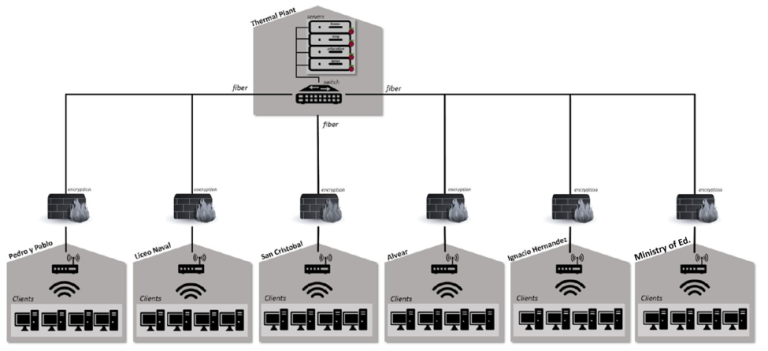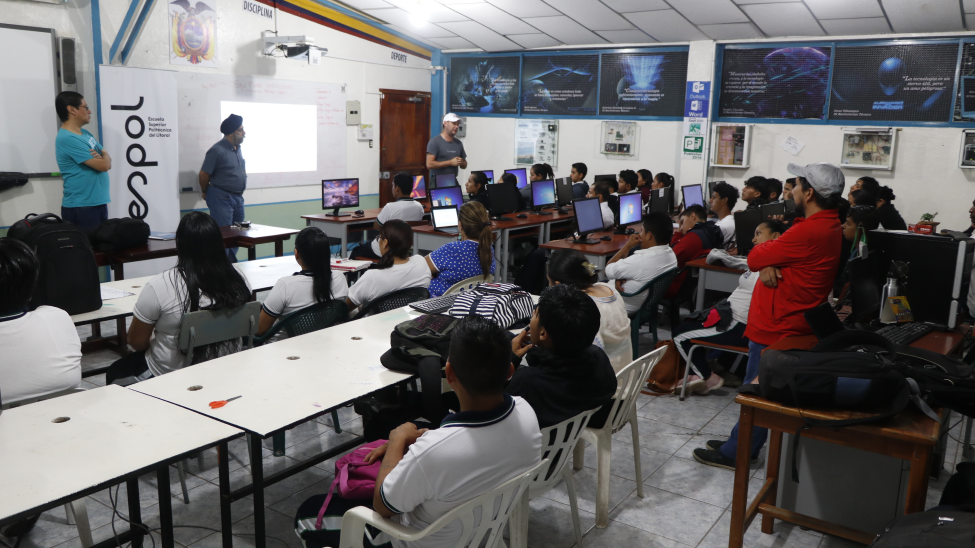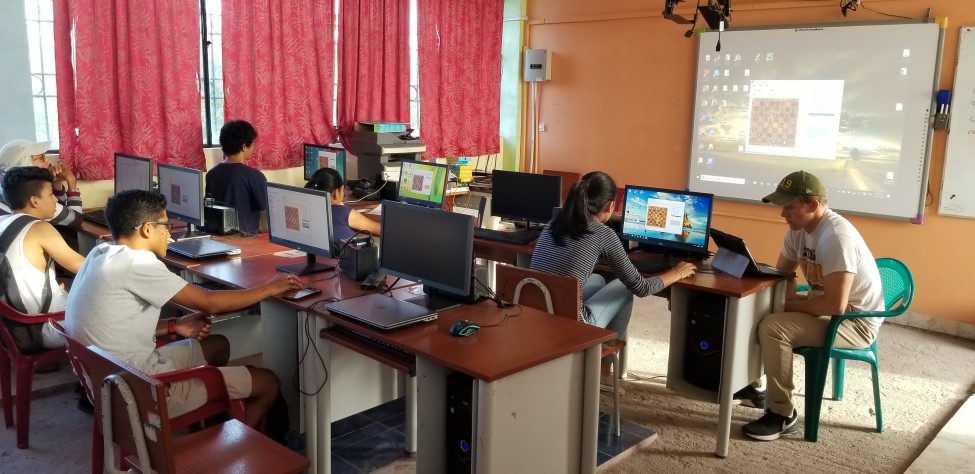Expansion of a Community Intranet to share Sustainable Education Resources on the Galapagos Islands

Project Overview
Project Location: Galapagos Province, Ecuador
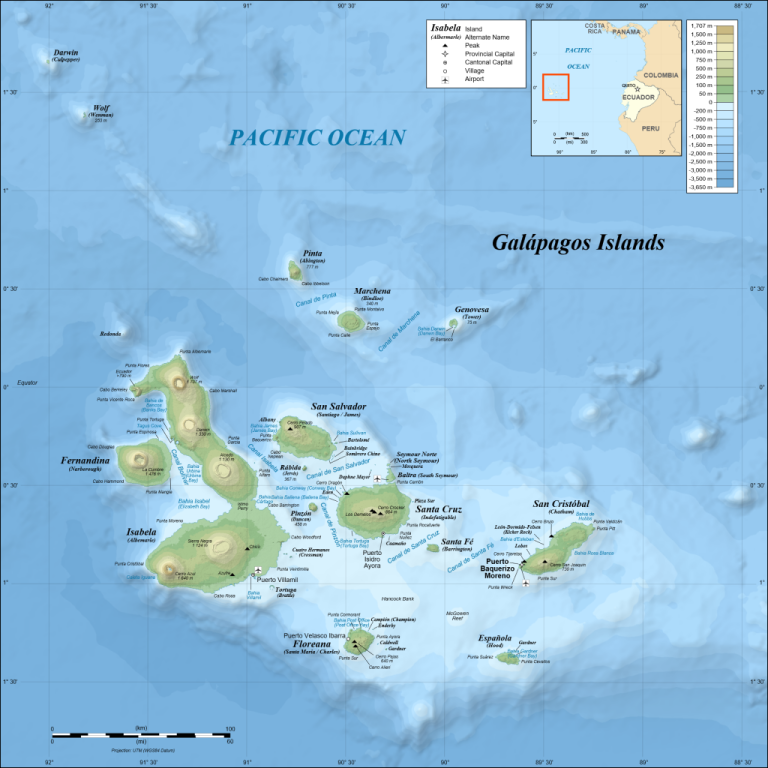
Sustainable Development Goals

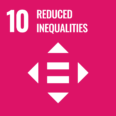
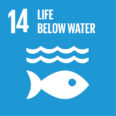

2019
Year Funded by HAC
$60,000 USD
Funding Provided by HAC
Region 9
IEEE Region
Ecuador
IEEE Section
Technology Types
ICT, ICT4E
Contact
Cesar Martin: cmartin@espol.edu.ec
Pritpal Singh: pritpal.singh@villanova.edu
Table of Contents
Project Details
Project Overview
The Galapagos Islands are one of the world’s top ecological tourist destinations, receiving over 200,000 visitors each year. However, one of the most significant challenges in the islands is the lack of connectivity, which is limited due to the absence of a direct fiber optic link to the mainland of Ecuador. Local telecommunication operators using the O3B (Other 3 Billion) satellite network are currently providing access to the Internet. This network has limited bandwidth and is very expensive and slow, limiting schools’ access to the Internet.
In practical applications, internet browsing is impossible at times, downloading documents can take hours, and video streaming is impractical. This lack of access to the Internet limits access to information and therefore the quality of education being provided to the students on the islands. This problem is aggravated by the lack of physical libraries – there is no library on San Cristobal island!
Solution
With the goal to provide improved access to education and communication services and resources, a Community Intranet Pilot was launched in 2018 on the island of San Cristobal. This community network introduced a variety of servers for sharing educational resources between the five schools on the island. This pilot project supports the existing Education for Sustainability Initiative of a tripartite partnership between Ecuador’s Ministry of Education, the Fundación Scalesia and Galapagos Conservancy, to educate more than 375 teachers on the principles of sustainable development.
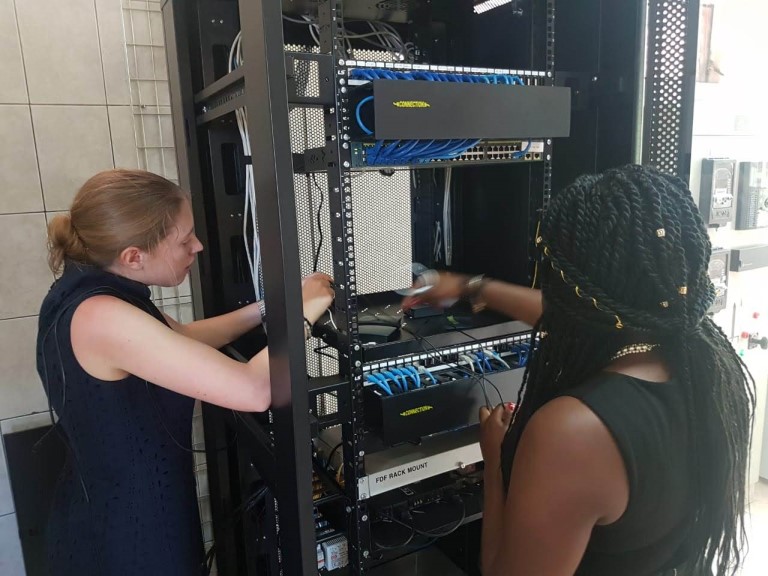
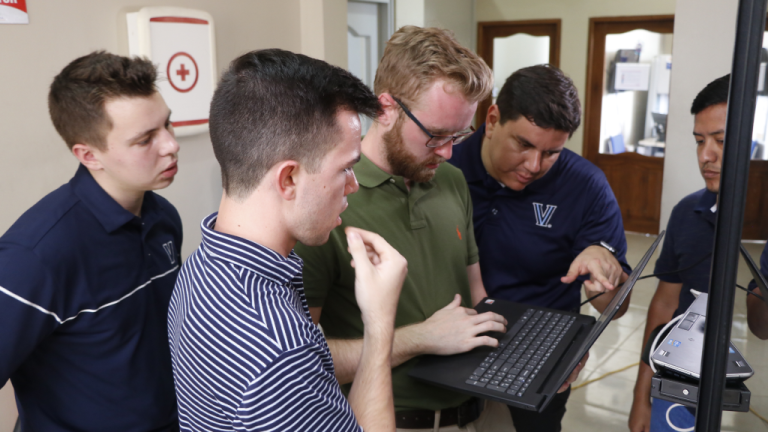
The Community Intranet Pilot was implemented using a client-server model over a combination of fiber optic network backbone and wireless communications for the last mile. Workshops to educate and empower end-users on the use of the system have been enthusiastically embraced with the goals of closing the digital divide, enhancing collaboration, and encourage the sharing of resources.
Stakeholders
- IEEE student volunteers
- Governing Council of Galapagos
- Ministry of Education
- Scalesia Foundation and Galapagos Conservancy
- ElecGalapagos, ECU 911, Ifotoncorp
- Beyond Chacay Foundation
- Villanova University and ESPOL students and professors
- Teachers and students at the schools
- Residents of local communities
- Local entrepreneurs
- IEEE Ecuador Section
Inputs
- Funding from IEEE HAC: $53,000 (2018), $60,000 (2019)
- Funding from IEEE Smart Village: $25,000 (2019)
- Funding from ESPOL: $2000 (2018), $2000 (2019); and Villanova University: $6,000 (2018), $9,000 (2019)
- Time of IEEE Ecuador Section volunteers and other volunteers
- Expertise from ElecGalapagos and Ifotoncorp
Activities
- Assessment of Communication and Energy Needs for the Galapagos Islands
- Workshops on introduction to Solar Energy were conducted
- Implementation of Educational Servers on Rasberry Pi Microcomputers
- Workshops on Digital Technologies and use of the Community Intranet system were conducted
- Workshops on Entrepreneurship were offered for local entrepreneurs
- Implementation of enhancements to Educational Resources on servers
- Workshops on Internet of Things were held at schools in San Cristobal and Santa Cruz islands
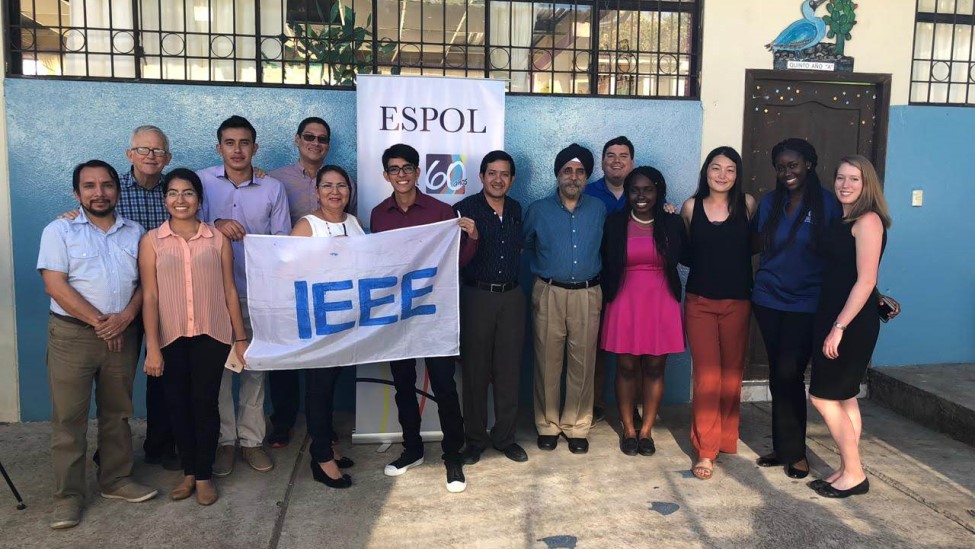
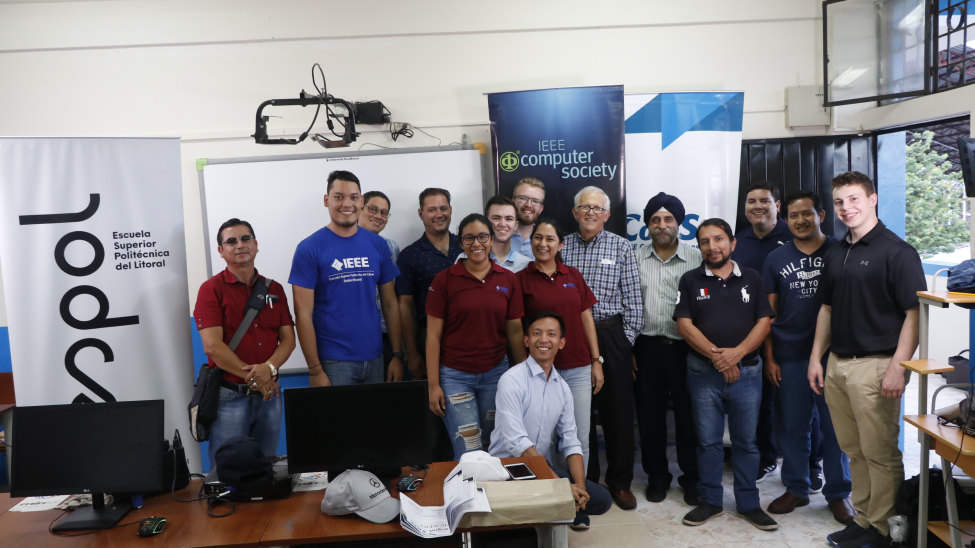
Outputs & Outcomes
Outputs (anticipated)
- Implemented fiber optic infrastructure reaching 5 schools and the Regional Office of the Ministry of Education and wireless infrastructure in each of the schools.
- 6 servers implemented. Educational Resources, Map, Blog and News, DNS, and Videoconference Server (Jitsi).
- Several workshops held on Digital Technologies, Renewable Energy, IOT, Entrepreneurship.
- Teachers and students have used the services available in the Community Intranet Pilot system in their classes.
- 15 computers were installed in the computer lab at Ignacio Hernandez school on San Cristobal Island.
Outcomes (anticipated)
- This project provides a platform for file sharing and communication for initiatives regarding the sustainable development and education of the community in the islands.
- Galapagos Conservancy through the Education for Sustainability Program is using the Community Intranet system focusing on strengthening the skills of local teachers and school leaders.
- Enhancements in the Quality of Education through the use of educational resources (videos, images, audio files, and resources like Wikipedia and Khan Academy) in classes.
Current Status
Project Status
The second phase of the project is currently under way and slated to finish August 2020. We’re looking for funding for the third phase of the project to expand to the remaining islands in the Galapagos.
Volunteer Opportunities
There are volunteer opportunities for IEEE Ecuador Section members and interested non-IEEE members, particularly students, located in Ecuador to participate in the project. Please contact Cesar Martin <cmartin@espol.edu.ec>.
Collaboration Opportunities
The project is also open for collaboration with international stakeholders. Please contact Pritpal Singh <pritpal.singh@villanova.edu> and David Lansdale <ecualansdale@gmail.com>.
Lessons Learned
- The negotiation of inter-institutional agreements is a slow and laborious process on the Islands and requires significant advanced planning and groundwork to ensure success and the complete buy-in of local stakeholders.
- The identification of a local project champion is critical to ensure that the new Intranet resources are efficiently and effectively incorporated into the activities of participating Education for Sustainability teachers.
- The system is available in all five schools in San Cristobal; however, some schools have few working computers or qualified computer teachers. This limits how much the Intranet system is used on those schools.
- Downloading content from the internet to upload to the system is very difficult due to the very long time it takes to download files in the Islands.
Sustainability Plans
The Governing Council in the Galapagos Islands is committed to the Sustainability of the Community Intranet project. They envision taking over the management of the system in the near future so they can use it to provide digital services and resources to the community. As part of the Sustainability plan, teachers and students are being trained in the use and features of the system. Furthermore, Ifotoncorp, a local TV and internet provider, who implemented the fiber optic infrastructure during the first phase of the project, is implementing the second phase. Ifotoncorp is committed to providing technical support and maintenance of the system for the next three years.
Scalability Plans
The current project is a scaling up of a pilot project designed to provide an ICT infrastructure to improve the quality of education in the Galapagos Islands. During the first phase, a Community Intranet Network was implemented using a load-bearing client-server model over a combination of fiber optic network backbone and wireless communications for the last mile on San Cristobal island.
The second phase of the project will replicate the system implemented on San Cristobal on the island of Santa Cruz. This will allow 11 additional schools to access the resources available in the system. Furthermore, an inter-island link will connect the Intranet networks on both islands creating a greater Archipelago Intranet System.
For More Information
Media
IEEE GHTC Article: Assessing Energy and Communication Needs for the Sustainable and Educational Development of the Inhabitants of the Galapagos Islands (Oct 2018)
Villanova COE Article: Villanova Engineers Partner with Ecuadoran University to Create Intranet Solutions for Galapagos Island Schools (2018)
Facebook Page: Villanova for a Sustainable Galapagos



